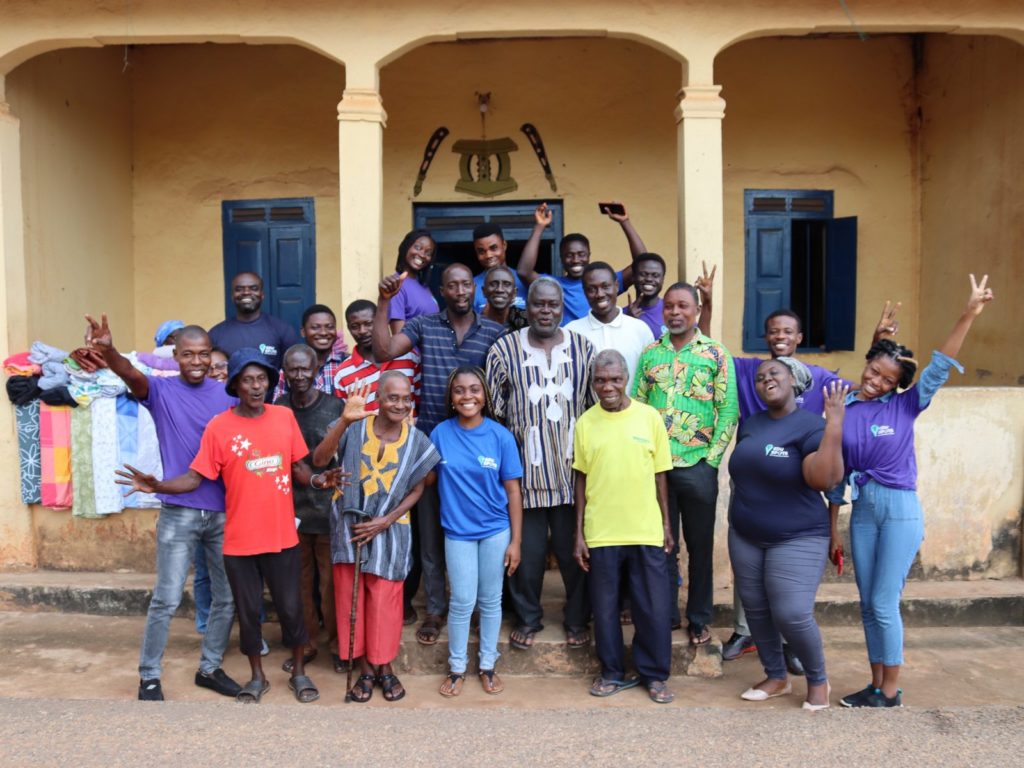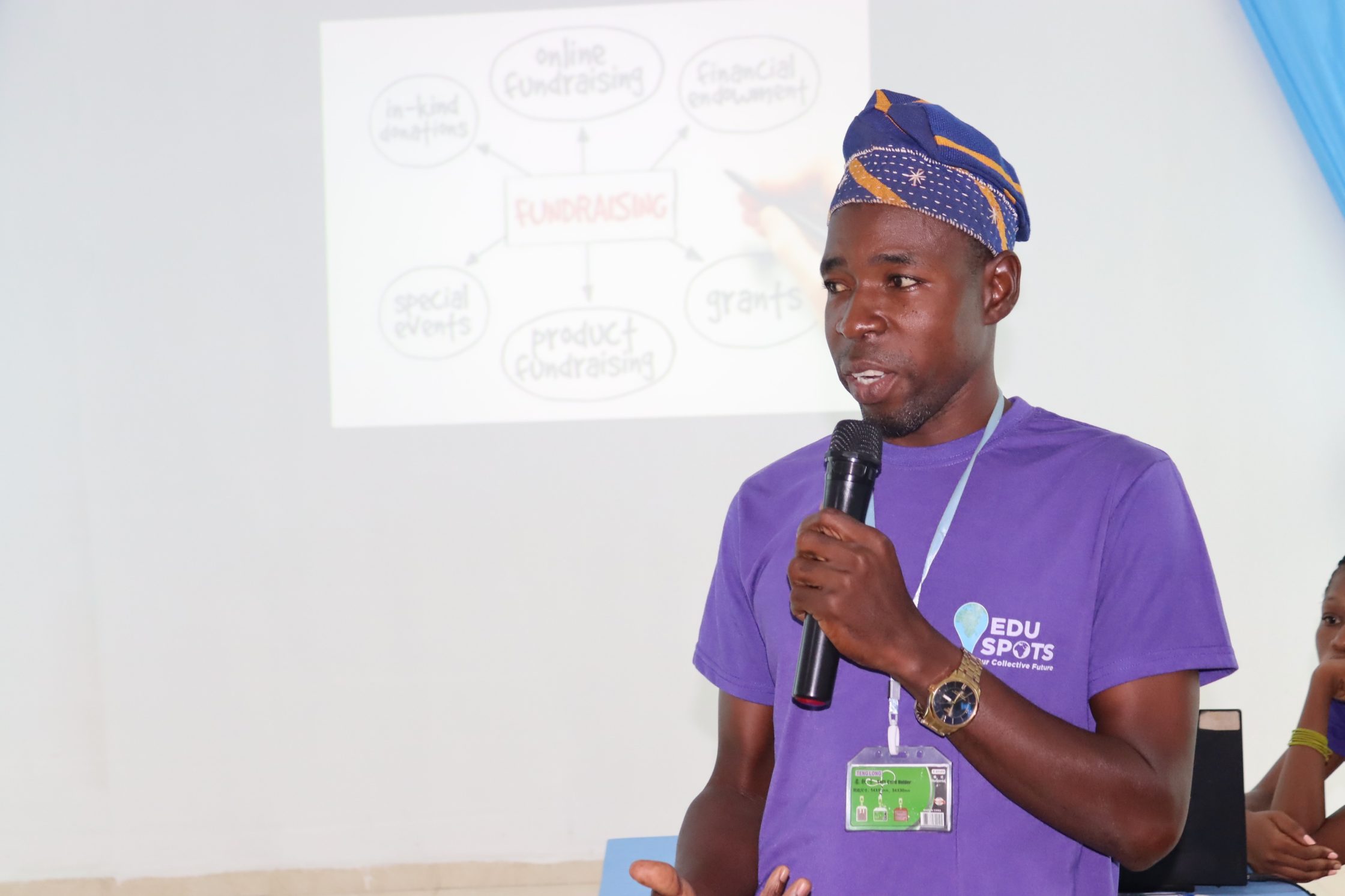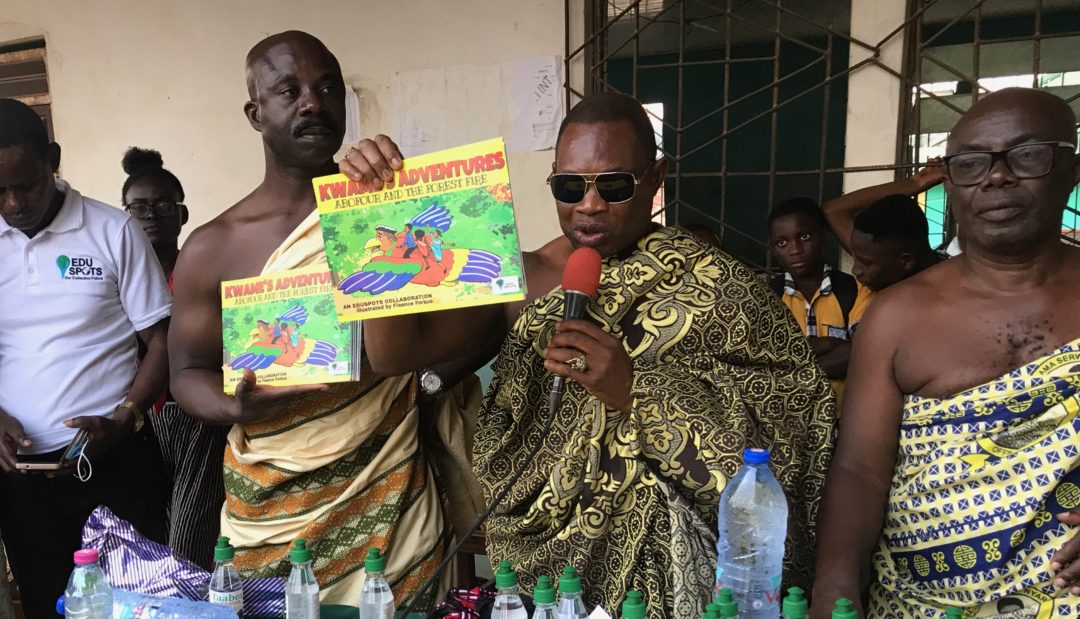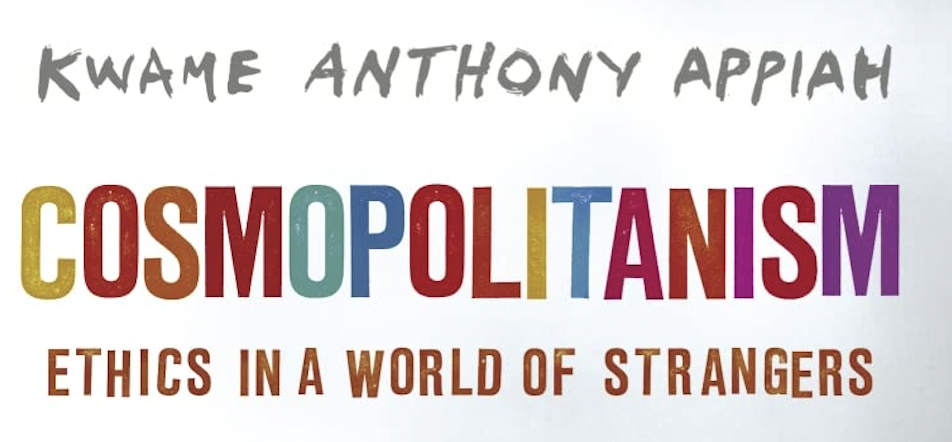Adam, captured, leading a session at our Ho regional Ignite conference, is the Project Leader at Kalpohin Spot, alongside taking a staff role as Spots Coordinator, sharing practice across the network.
EduSpots is committed to developing what we call ‘community-led’ education.
Our community-led model is very much in constant development – an ongoing education experiment across 50 communities in rural Ghana and Kenya.
What do we mean by ‘community-led’?
The phrase ‘community-led’ is often thrown about in the development context without much specificity, so let’s take a moment to unpack what we might we mean by using this term in the EduSpots’ context.
In our model, the ‘communities’ in question are our Spot communities, mostly in rural areas of Ghana and Kenya. Those in the communities ‘leading’ are community-based volunteers named ‘Catalysts’, who are a diverse mix of teachers, students and wider community members.
In our model of education, our ‘Spots’ are managed and owned by communities, rather than by EduSpots centrally. From the point of joining the network, EduSpots makes this relationship clear in partnership agreements, with Spots led by communities, but members of the EduSpots’ network.
Many aspects of our work such as our safeguarding and protection strategy, are led by the community, but supported by EduSpots.
I have full awareness that as EduSpots’ current Chair, I am not from a Ghanaian or Kenyan community, which might mean that we avoid describing EduSpots as an entirely ‘community-led organisation’.
To us, ‘community-led’ education means:
- The process of joining EduSpots is led by community members applying to EduSpots, rather than EduSpots targeting communities.
- The Spots are owned, managed and led by communities.
- The education delivery is physically led on the ground by community volunteers without staff present.
- Local volunteers decide which programmes they want to lead, with a range of choices given (with them determining the 5 strands we have created in the first instance), alongside the opportunity to develop their own diverse clubs.
- Local volunteers input into the curriculum design – our core working aims, activities, and evaluation process. The process is led from their ideas and interests.
- We have a staff facilitation team that is 50% or made up of community volunteers with most, if not all staff, working in Ghana having some form of lived experience of education in the rural community context.
- We have introduced a peer mentoring programme, that enables individuals in Spot communities to formally share advice built on experience, with this also serving as a development opportunity into the staff team. This ensures that knowledge is constantly transferred from community-community, as well as from staff-community and community-staff.
- When staff deliver in-person training, the structure increasingly ensures that volunteers lead elements of the sessions, or otherwise tasks are designed to build from their knowledge and experiences.
- We run vibrant communities of practice on WhatsApp, which are active environments for knowledge and insight sharing, with volunteers increasingly given roles of responsibility.
It is a core part our ultimate aim and core systems change to create a longer-term shift in mindset away from community members being recipients of support, to become members, and leaders, of a network.
This leadership role can extend far beyond the Spots, into the wider community and indeed nation and world at large.

Anita, centre in blue, above, is EduSpots’ Ignite Girls Peer Mentor, as well as the Spot Founder of Gomoa Manso Spot, ensuring that local community knowledge feeds directly into programme development.
What does ‘community-led curriculum development’ look like in practice?
Let’s take as an example, how we are currently developing our ‘Ignite Girls’ curriculum working with our community-based Catalysts. These are the stages we have moved through:
- Community-based volunteers (Catalysts) suggest the education strands they want launched in the network many months in advance of new programmes being created.
- Once key strands were decided (e.g. girls’ empowerment (‘Ignite Girls’ ) and early years literacy (‘EduKidz’) in 2023), Catalysts suggest the key monthly themes based on needs identified in their contexts. This included future ambitions, menstrual health and communication.
- The order of the themes is adaptable and decided by the emerging needs of the network rather than fixed.
- Catalysts indicate what change they want to see through the programme in their communities. These determine the aims of the month’s club sessions.
- Catalysts suggest possible activities for the month which could achieve these aims. These feed into the resources made by the staff and peer mentor team.
- We hold online training sessions where communities share their practice and ideas, with discussions further sustained on WhatsApp and via phone call for those with limited connectivity.
- All EduSpots activities are then led by local Catalysts on the ground. Our Catalysts follow the broad plans laid out, but adapt them to their context, and also create their own elements, often leading additional sessions.
- Indeed, our activities are usually designed such that they allow adaptability to the specific community context rather than providing fixed solutions. They involve the students and wider community in creating the solution (e.g. menstrual hygiene approached by communities created their own sustainable solution whether developing local enterprise or holding pad-making workshops)
- Catalysts are increasingly leading the reflection/evaluation process afterwards.
This approach is not without its challenges – the process can feel less efficient at times, and it’s not always easy to get the quality and consistency of engagement and input that we would like from the communities due to a mixture of constraints on their availability, attention, connectivity and confidence.
But we believe the sustainability of the impact and its context specificity, is more than worth the effort, leading to a much stronger sense of ownership in the communities. This allows changes to be sustained over time, building from ongoing local relationships between community members, teachers and students.
Any thoughts on this article, or ideas of how we could develop our model further? Post in the comments!


